Hatchbacks
Fuel Miser Comparison (2010/2022) Smart-VW

I thought I’d look at a list of cars that featured in an article written back in 2010, where I compared some of the thriftiest cars at that time. These were cars which had been designed to function as some of the world’s best fuel sippers. These vehicles were sold new in Australia, but I thought I’d add a new twist this time by adding what we can consider as the brand new version of these old models with their statistics for fuel consumption as a comparison – you know, a bit of nostalgia along with the new, and what’s changed – or not.
Note that the fuel consumption figures are based on the number of litres of fuel consumed every 100 km travelled. Often real world situations can play havoc with Lab tested fuel consumption figures, but this definitely gives you an interesting picture And, here is the list that is in alphabetical order – just to be helpful:
Smart
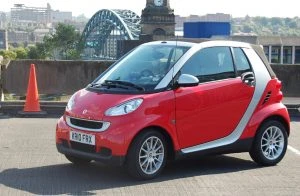
2010 Smart ForTwo
By far the smallest car being talked about in 2010 with excellent fuel consumption was the Smart ForTwo. It still fits into car parks like you wouldn’t believe! Small and safe, comfortable and peppy, any smart CBD commuter would be tempted by the tiny Smart ForTwo. It boasts a combined fuel economy figure that sits well under 5 litres/100 km – and this all coming from a ULP motor. Currently you can’t buy any new Smart car in Australia, though I’ve heard that, in the near future, they are making a comeback with purely electric power and with new design.
SsangYong
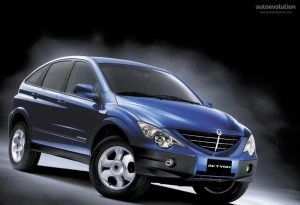
2010 SsangYong Actyon SUV
At the time, the 2010 SsangYong Actyon was about the most frugal SUV you could buy new at an impressively low price. The economic SUV has muscly looks and a rugged design that could see the vehicle handling tough off-road terrain with ease. SsangYong uses a 2.0 litre turbo-diesel engine in this vehicle, which packs over 300 Nm of torque to go with its excellent 4×4 underpinnings. Getting any 1.8 tonne vehicle to manage under 5 litres/100 km is a feat. So, well done to SsangYong! Currently, no more SsangYong vehicles quite match the excellent economy of an Actyon Diesel.
Suzuki
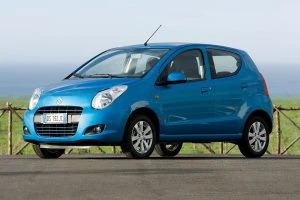
2010 Suzuki Alto
Budget priced, and one of the few petrol powered cars back in 2010 delivering awesome fuel economy was the Suzuki Alto. The Suzuki Alto 1.0 litre GL and GLX has an attainable fuel economy figure of 4.8 litres/100 km. The Suzuki Alto is also nice looking (bug-eyed), has six airbags, and even comes with ESP as standard in the GLX model. Great for around town – you’d be nuts to not consider an Alto.
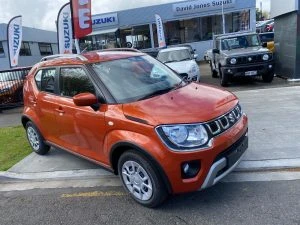
2022 Suzuki Ignis
There are no new Altos in 2022, but Suzuki do offer us the awesome little Suzuki Ignis GL Manual and GLX auto. These cars use a 1.2-litre ULP motor and deliver a similar fuel consumption to the 2010 Alto. Safety in new Suzuki cars has taken a big leap forward, so too has all the modern technology. Brand new Swift and Baleno models are definitely worth a look. These are also economy-driven cars with decent comfort, technology, and practicality.
Toyota
Where would the world be without Toyota? For a very frugal, spacious, and practical drive, the clean burning 2010 Toyota Prius III offered a 1.8 litre petrol hybrid engine. It didn’t come cheap, but it was certainly friendly on the environment. You could expect around 4.0 litres/ 100 km – sometimes better.
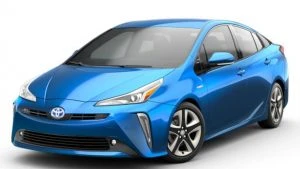
2022 Toyota Prius
You can now buy a 2022 Toyota Prius model for between $42–50k. These are nice cars and much more impressive to look at than the older models. They are safe and packed with excellent features. The Prius still continues with the same petrol-electric engineering that made it such a standout when it was launched in 2001. The same basic technology remains for the 4th-generation Prius, as well as all Toyota/Lexus hybrids these days. So, what a new Prius offers is a small-capacity 4-cylinder engine that works through a planetary gear set to dispense the delivery of power to the front wheels (or also the rear wheels in SUV variants). The current Toyota Prius is powered by a 72kW/142Nm 1.8-litre engine that combines with an electric motor to produce a joint maximum power output of 90kW and a claimed fuel consumption of 3.4 litres/100km. Better than ever! Toyota newest vehicles: the CH-R, Camry, Corolla, RAV-4, and Yaris Hybrid models are available with very low fuel consumption figures. Toyota and Honda are masters of the Hybrid-game, and have been for quite some time.
VW
Back in 2010, the Germans offered plenty of cars with excellent fuel consumption. Volkswagen has for a long time offered well-designed, reliable and fuel efficient motorcars. They are generally refined, elegant, and roomy, and the 2010 VW Golf 77TDI variant easily boasts fuel economy figures below 5 litres/100 km on a combined cycle.
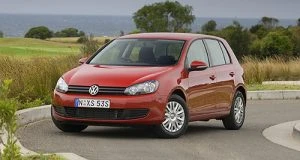
2010 VW 77TDI
2022 sees the Golf Hatch with 5 models, and in Wagon form it has a couple of nice new variants. The base models use a 110TSI 1.4-litre ULP motor, which is a 4-cylinder that is smooth and can return a claimed 5.8 litres/100 km. 250 Nm of torque offers muscle when you need it, and the car cruises at high speed effortlessly. The 8th-generation of the Golf brings not only fresh external and interior design, but it is also the safest, most tech-laden ever.
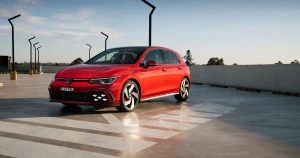
2022 VW Golf 110TSI
There are other new cars right across the auto-manufacturing spectrum now that offer superb fuel economy or EV power alone. It’s interesting how in that time (2010–2022) we’ve seen auto manufacturers taking a shift away from providing the new-car buyer with several frugal diesel family options to a fleet that is now a lot more Hybrid in flavour. It’s a change coerced by new government law and regulation. However, hybrid vehicles are superb automobiles that offer top fuel consumption figures and practicality, creating that much needed bridge between purely fossil fuel vehicles and completely EV-powered automobiles
Do check out the brand new arrivals. Cars like the Hyundai IONIC, Hyundai KONA, Kia EV6, Kia Niro, Mazda MX-30, BMW i and Hybrid models, Mercedes Benz EQA and EQC models, MG HS EV, Polestar cars, Tesla, and Volvo’s Recharge and Hybrid models are just some of the amazing new cars available that we can now buy that weren’t even a showing back in 2010.
Happy commuting!
Fuel Miser Comparison (2010/2022) Ford-Peugeot

I thought I’d look at a list of cars that featured in an article written back in 2010, where I compared some of the thriftiest cars at that time. These were cars which had been designed to function as some of the world’s best fuel sippers. These vehicles were sold new in Australia, but I thought I’d add a new twist this time by adding what we can consider as the brand new version of these old models with their statistics for fuel consumption as a comparison – you know, a bit of nostalgia along with the new, and what’s changed – or not.
Note that the fuel consumption figures are based on the number of litres of fuel consumed every 100 km travelled. Often real world situations can play havoc with Lab tested fuel consumption figures, but this definitely gives you an interesting picture. And, here is the list that is in alphabetical order – just to be helpful:
Ford
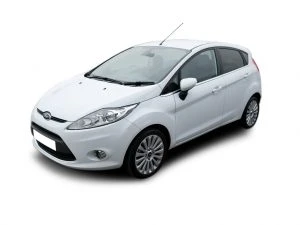
Ford Fiesta Econetic 2010
Back in 2010, the benchmark for fuel-misers belonged to the stylish Ford Fiesta Econetic. Nothing was able to beat the claimed 3.7 litres/100 km fuel economy figure that this car offered. It is a nicely designed car that looks good even today, and is also a great handling FWD Hatch.
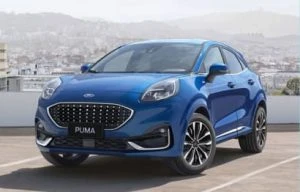
Ford Puma 2022
I’m not quite sure why, but Ford no longer sell us a new Fiesta Hatchback. However, you can buy a brand new Ford Fiesta-based Puma in 2022, which is a small SUV (Hatchback on steroids) that comes with a 92kW/170Nm 3-cylinder turbo petrol engine. Cabin space is claimed to be class-leading, and the boot expands from 456 litres to 1161 litres. You can also enjoy a fuel consumption figure of around 5.3 litres/100 km.
Honda
Honda’s ever reliable Civic is still a nice drive today. In 2010 Honda offered it in a Hybrid Sedan shape that employed a little 1.3 litre Hybrid Honda engine, delivering a combined economy of around 4.5 – 5.0 litres/100 km.
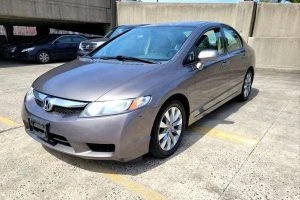
Honda Civic 2010
2022 sees the Civic come alive with a very classy exterior and a powerful 1.5-litre Turbo petrol engine with 131 kW of power and 240Nm of torque. Somewhere around 6.3 litres/100 km is attainable, and with a ride that is comfortable and athletic.
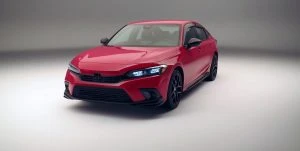
Honda Civic 2022
To find Honda’s current fuel miser, the brand new HR-V is an eco-friendly rewarding drive. Honda’s e:HEV technology in the HR-V utilises an intelligent 2-Motor i-MMD hybrid system that seamlessly switches between three modes to give you optimal performance, and a smoother, greener, and more fun driving experience. A claimed 4.3 litres/100 km for the e:HEV-L hybrid and 5.8 litres/100 km for the Vi X 1.6-litre petrol motor is on offer.
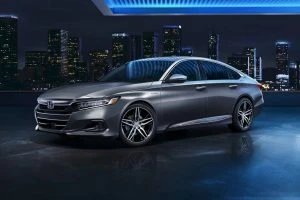
Honda Accord Hybrid Sedan 2022
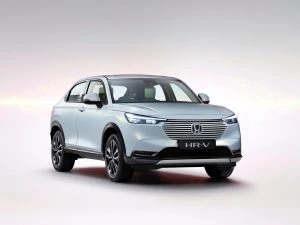
2022 Honda HR-V
All class, you can also get yourself into one of the best Hybrid Sedans you can buy: the 2022 Honda Accord Hybrid. It boasts a claimed 4.3 litres/100 km combined fuel economy – a very good figure for what is a sporty, comfortable family sedan, with striking looks and all the modern goodies.
Hyundai
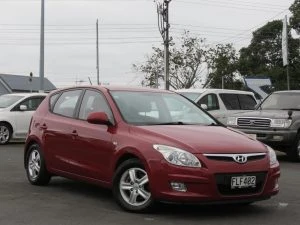
Hyundai i30 CRDI 2010
Back in 2010, Hyundai had come to the economy party with its 1.6 litre turbo-diesel Hyundai i30, known as the SX CRDi. Back then, it was Australia’s cheapest diesel car to buy new. The car was pleasant to look at, and it had a nicely finished interior and plenty of zip. With 255 Nm of torque, and a fuel economy figure of 4.7 litres/100 km, it’s still an economic little car to drive around in today.
2022 has seen Hyundai exploding with all sorts of new and exciting models that are economical, practical, and full of all the best safety and technology as standard! Hyundai’s 2022 i30 Sedan and Hatch can come with a 120kW/203Nm 2.0-litre aspirated petrol engine, a 150kW/265Nm 1.6-litre turbo-petrol and, in hot N variants, a storming 206kW/392Nm 2.0-litre petrol turbo. The 1.6-litre Turbo is the most frugal, offering around 6.8-7.0 litres/100 km combined.
But wait, there’s more! Hyundai’s 2022 IONIC and KONA models have skipped the Hybrid tech and gone straight to EV power.
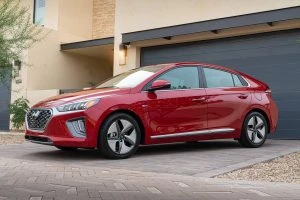
2022 Hyundai IONIQ
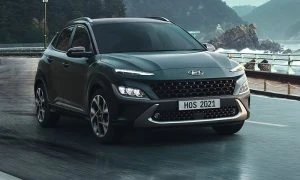
2022 Hyundai KONA
MINI
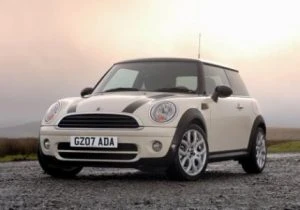
2010 Mini Cooper D
Mini, or BMW more correctly, offered the little Mini Cooper D in 2010 with a small 1.6 litre turbo-diesel engine, excellent fuel economy, and plenty of punch. As the frugal engine is linked to a six-speed manual gearbox, the claimed 3.9 litres/100 km was doable in a number of conditions.
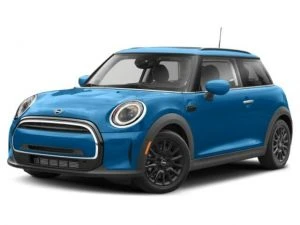
2022 Mini Cooper Classic
Fast forward to 2022, and a new Mini still has one of the catchiest hatchback designs you can buy, along with, perhaps, the best handling characteristics in a FWD small hatchback. They are definitely worth a look and loads of fun. You have many different models to choose from, however the base model Mini Cooper Classic is the most efficient now, with no diesel engine offered anymore. The 3-cylinder 1.5-litre Turbo petrol engine uses DOHC with VVT and VV-Lift technology, and can return a BMW claimed 4.9 (Highway), 6.9 (City), and 5.7 (combined) litres/100 km, respectively.
Peugeot
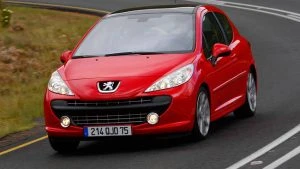
2010 Peugeot 207
Small French Pugs have always been a favourite hatchback of mine. For all their quirks, they are comfortable, practical, efficient, and generally classy all-round. In 2010, the little Peugeot 207 offered a fine economy package in the XT HDi, boasting just 4.8 litres/100 km combined.
2022 sees Peugeot offering us the 2008 GT with a ULP 1.2-litre Turbo 3-Cylinder motor capable of 114 kW, 240 Nm and a claimed economy figure of 6.1 litres/100 km. With this one, you get a very comfortable, practical little SUV with premium safety features.
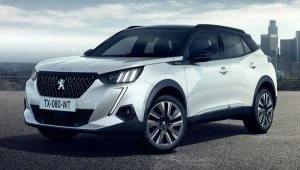
2022 Peugeot 2008 GT
Hybrids have taken off, and so the best and most impressive Peugeot of the lot is the new Peugeot 508 GT Plug-in Hybrid. The 508 range has stunning lines and is an exciting car. The 508 Sedan or 508 Wagon are roomy, very comfortable, and loaded with excellent technology and safety. You fork out around $77k for one of these new, however, it costs way less than a German equivalent. Peugeot reckon you can obtain 1.8 litres/100 km of ULP fuel use if your commute’s stars align. Regardless of whether you quite get down to this, this sort of hybrid travel is impressive in its own right!
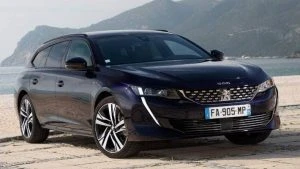
2022 Peugeot 508 GT Wagon
Fiat Happenings

Scattered around Australia are numerous Fiat outlets with showroom teams that are willing to buy, sell and service any of their special brand of car. You’ll find a Fiat showroom in Perth, Adelaide, Melbourne, Canberra, Sydney, Wollongong, Brisbane and on the Sunshine Coast. There are even more places around Australia who are experts in servicing or accessing parts for your Fiat or Fiat Abarth vehicles. This leaves you very little need to hold off being the proud owner of a new or used Italian legend should you so desire.
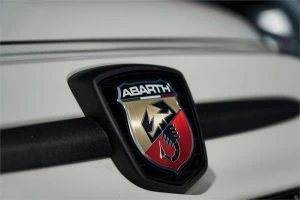
New 2021/2022 Fiat vehicles offer a variety of small 4- and 5-seater cars that come as standard little hatchbacks or hatchbacks with a bit more Abarth pep and performance. The Abarth brand are the performance models that are special Fiat 500s with lots of fun and plenty of zip to make your drive both entertaining and unique. The standard Fiat 500 is a surprisingly roomy small car that is comfortable and efficient to drive.
Fiat also does a range of commercial vehicles that are mainly a variety of medium and large vans. These are popular vans for businesses because Fiat offer their range of modern, safe vans at a reasonable price, and the team are willing to back their vans up with a competitive servicing and warranty package for any of their new Fiat-commercial-model buyers. Fiat also offer the Ducato in a range of motorhome and camper styles.
Fiat really is a quintessential “Made in Italy” stamp with all its Italian history, style, constant innovation and decent quality being part of the modern range. The recent Fiat 500 has seen 80% of its sales outside of Italy, and it is a model that leads the city car segment in Europe together with its cute little sibling, the Fiat Panda.
Recently, the introduction of the Hybrid Fiat 500 and Panda has given an extra boost to the sales of both models. These are exceptionally economical cars. In Italy, the stylish Fiat 500X has been refreshed, ready to continue playing a leading role in many Italian family’s lives. Indeed, since its launch in 2014, the Fiat 500X has always led its segment in Italy, and the car regularly features in the European top 10 small-car segment.
Recent news from Fiat in Europe has seen some other new model launches, which would also be nice to see become available here in Australia – particularly for those of us who want to get the benefits of driving a small and efficient car with Italian style. The final months of last year saw the new Fiat 500, Tipo, Tipo Cross and Panda range, and so Fiat has brought 2021 around with the entire line-up of cars being completely refreshed.
A lot of effort has gone into providing new Fiats and Abarths with all the latest technology, safety, comfort and style for each new variant. New models also boast Euro 6D-Final-compliant engines across the entire range. The Connect trim level is directed at customers who want to stay connected at all times. Models with Connect come standard with the 7-inch Uconnect infotainment system with DAB radio, Apple CarPlay and Android Auto, the easy and efficient way to exploit the services of your device while travelling in your car.
Standard features of the 2021 Fiat 500 also includes cruise control, a sports steering wheel with built-in controls, 15-inch alloy wheels and fog lights. You can also select the dedicated new Perbene Grey/Vesuvius Black two-tone insignia. The 2021/2022 Fiat 500X comes with black seats, a techno-leather steering wheel, 16-inch alloy wheels, blacked-out windows, fog lights, LED DRLs, parking sensors, along with dusk sensors and rain sensors.
Here is a picture of the stunning little Abarth F595. Check out the gorgeous body kit and quad exhausts!
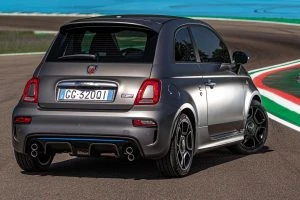
Abarth F595
2021 Subaru XV S & Premium: Private Fleet Car Review.
Subaru in Australia positions itself as a niche player. That may well be the case but it also does the brand a disservice. For example, March of 2021 saw 4,212 Subarus sold, with over 10,700 on a year-to-date basis. That puts the brand, for the month and YTD, ahead of Volkswagen, Honda, BMW, and Mercedes-Benz, and just over 300 shy of Nissan. It’s one of the brand’s best set of sales numbers. It’s an astounding result for the company here in Australia given the range is Outback, BRZ sports coupe, Forester, Impreza sedan and wagon, WRX, and Impreza wagon-based XV. There is no large SUV nor a two or four door, two or four wheel drive ute.
It’s an astounding result for the company here in Australia given the range is Outback, BRZ sports coupe, Forester, Impreza sedan and wagon, WRX, and Impreza wagon-based XV. There is no large SUV nor a two or four door, two or four wheel drive ute. We were able to drive, back-to-back, two examples of the late-2020 updated XV. In honesty, the naming system needs work, with a base model simply called XV, then L and a hybrid, Premium, then S and a hybrid version. S and then Premium is what we were supplied with however it would make more sense to change S to Premium and vice-versa.
We were able to drive, back-to-back, two examples of the late-2020 updated XV. In honesty, the naming system needs work, with a base model simply called XV, then L and a hybrid, Premium, then S and a hybrid version. S and then Premium is what we were supplied with however it would make more sense to change S to Premium and vice-versa.
For 2021 there have been some minor changes to pricing. The base model starts from $29,690 (up $450), with the L from $31,990. That’s an increase of $380. The Premium jumps by a heft $1,170 to $34,590, with the S up by $760 to $37,290. The Hybrids, now a pair rather than a single offering are unchanged at 435,490 and $40,790. These are not inclusive of on-road costs. Externally there are minimal sheetmetal differences between the two. The wheels themselves are different in design, plus have an inch of diameter in difference. The Premium has 17s, the S has 18s and a more striking design. The Premium sources rubber from Yokohama at 225/60, the S has Bridgestones at 225/55. A mid-life update in late 2020 saw minor tweaks to the front bumper and around the driving lights in the lower sections, plus a refresh of the grille.
Externally there are minimal sheetmetal differences between the two. The wheels themselves are different in design, plus have an inch of diameter in difference. The Premium has 17s, the S has 18s and a more striking design. The Premium sources rubber from Yokohama at 225/60, the S has Bridgestones at 225/55. A mid-life update in late 2020 saw minor tweaks to the front bumper and around the driving lights in the lower sections, plus a refresh of the grille. The Premium now has folding wing mirrors and they’re heated as well. The S has self-leveling headlights and they are auto on, as are the wipers. Unfortunately the Premium and below don’t have auto on lights, a safety issue in our opinion.
The Premium now has folding wing mirrors and they’re heated as well. The S has self-leveling headlights and they are auto on, as are the wipers. Unfortunately the Premium and below don’t have auto on lights, a safety issue in our opinion.
There is an extensive colour palette too, including Lagoon Blue for the Hybrids. There is Crystal White, Dark Blue and Horizon Blue, Magnetite Grey and Crystal Black, along with Cool Grey, Ice Silver, Plasma Yellow and Pure Red. On the road the pair have gained suspension updates too, with a change to the front providing a slightly more precise handling. The front has MacPherson struts & coil springs, with the rear having double wishbones. Although ostensibly there’s been no change to the rear it feels slightly softer and more compliant over the smaller ruts and bumps. It’s quick to damp out any intrusioons from the road however we did notice some bump steer and a slight skip sideways over road joins.
On the road the pair have gained suspension updates too, with a change to the front providing a slightly more precise handling. The front has MacPherson struts & coil springs, with the rear having double wishbones. Although ostensibly there’s been no change to the rear it feels slightly softer and more compliant over the smaller ruts and bumps. It’s quick to damp out any intrusioons from the road however we did notice some bump steer and a slight skip sideways over road joins. Drivewise the engine and transmission are unchanged, with the 2.0L flat four working quite handily with the CVT. It’s modestly powered at 115kW, with torque a handy 196Nm. The trick to extracting the best from the CVT is to not go heavy and hard from the start on the accelerator.A light but progressive press seems to extract the best overall acceleration, with a linear growth in speed, rather than the more traditional feel of slipping under pressure.
Drivewise the engine and transmission are unchanged, with the 2.0L flat four working quite handily with the CVT. It’s modestly powered at 115kW, with torque a handy 196Nm. The trick to extracting the best from the CVT is to not go heavy and hard from the start on the accelerator.A light but progressive press seems to extract the best overall acceleration, with a linear growth in speed, rather than the more traditional feel of slipping under pressure.
There is manual shifting available via paddle shifts, which can be quite handy in certain driving conditions such as uphill traffic, providing the driver with more overall control. Having said that, the CVT in both did display some of the traits they’re known for, with sensations of surging at low speed, but we also have to say that they weren’t as noisy as we’ve experienced. The drive system now has the SI Drive, an electronic program that adds some sporting spice to the engine’s mapping and the the changes in the CVT’s seven preset ratios. The S mode sharpens the throttle response and the XV feels sprightlier, zippier, and makes for better highway manouvering. The steering itself has some weight to it, but not so that it’s fighting the AWD system. It’s quick in response, and is ratioed for a tight 10.8 metre turning circle. The AWD system is naturally well sorted with no noticeable pull from either end but the grip levels are noted when hunting corners at speed.
The drive system now has the SI Drive, an electronic program that adds some sporting spice to the engine’s mapping and the the changes in the CVT’s seven preset ratios. The S mode sharpens the throttle response and the XV feels sprightlier, zippier, and makes for better highway manouvering. The steering itself has some weight to it, but not so that it’s fighting the AWD system. It’s quick in response, and is ratioed for a tight 10.8 metre turning circle. The AWD system is naturally well sorted with no noticeable pull from either end but the grip levels are noted when hunting corners at speed.
Economy on both finished smack on 7.0L/100km, equaling the quoted economy figure on the combined cycle. However, our figures were on a our traditional 70/30 urban to highway, with Subaru quoting 8.8L/100km for the urban cycle. It’s a reasonable highway cruiser, with the revs ticking over just below 2,000 at Australian limits. It’s quiet, too, with the engine only showcasing its metallic keen and the boxer warble from the exhaust when pressed.
Safety for the Premium sees the “Vision Assist” package added in, with the Blind Spot Monitor, Lane Change Assist, Rear Cross Traffic Alert, automatic braking in reverse if an object is sensed, and a front view monitor via a left wing mirror camera. The whole range has seven airbags including a kneebag.  All but the entry level version have the Eyesight package which includes Adaptive Cruise, Brake Light Recognition which alerts the driver to say the vehicle ahead has moved on, Lane Departure Warning, and Lane Keep Assist. The latter is less aggressive in its workings than that found in the two Korean brands. Tyre Pressure Monitoring is standard, however, across all models.
All but the entry level version have the Eyesight package which includes Adaptive Cruise, Brake Light Recognition which alerts the driver to say the vehicle ahead has moved on, Lane Departure Warning, and Lane Keep Assist. The latter is less aggressive in its workings than that found in the two Korean brands. Tyre Pressure Monitoring is standard, however, across all models. The S ups the ante thanks to Subaru’s X-Mode, a preprogrammed soft-road mode for snow or mild off-roading. There’s a bit of extra “looxshoory” with memory seating for the driver, heating but no venting for the front seats, good looking stitching across the dash and binnacle, piano black gloss trim, and auto dipping wing mirrors.
The S ups the ante thanks to Subaru’s X-Mode, a preprogrammed soft-road mode for snow or mild off-roading. There’s a bit of extra “looxshoory” with memory seating for the driver, heating but no venting for the front seats, good looking stitching across the dash and binnacle, piano black gloss trim, and auto dipping wing mirrors.
The expected user controls such as Info on the lower left of the steering wheel remain, showing a multitude of options on the dashboard’s upper screen. The 6.3 inch main screen stays with its frustrating lack of information being fully displayed as in artist and song title, whilst otherwise remaining easy to read and use. Premium has cloth covering in the centre of the seats and it’s a funky mix of bright yellow stitching contrasting with the light grey cloth and black leather. The interior door handles have a faux carbon-fibre inset, with the S having a higher quality sheen. The S also has alloy pedals and footrest. The rear seats have a fold-out centre section with two cupholders.
Premium has cloth covering in the centre of the seats and it’s a funky mix of bright yellow stitching contrasting with the light grey cloth and black leather. The interior door handles have a faux carbon-fibre inset, with the S having a higher quality sheen. The S also has alloy pedals and footrest. The rear seats have a fold-out centre section with two cupholders. Neither have a charge pad for smartphones nor a powered tailgate. There are 12V sockets up front but no rear seat ports. Cargo space is 310L with the rear seats up, 765L when they’re folded. The spare is a temporary or space saver. With the XV being the same body as the Impreza hatch, but raised in ride height, it makes for loading the cargo bay just that little bit easier thanks to less bending down.
Neither have a charge pad for smartphones nor a powered tailgate. There are 12V sockets up front but no rear seat ports. Cargo space is 310L with the rear seats up, 765L when they’re folded. The spare is a temporary or space saver. With the XV being the same body as the Impreza hatch, but raised in ride height, it makes for loading the cargo bay just that little bit easier thanks to less bending down. There’s a five year and unlimited kilometre warranty on the XV range, with capped price servicing with prices available via your dealer. There is also 12 months complimentary roadside assistance, and three years satnav maps update.
There’s a five year and unlimited kilometre warranty on the XV range, with capped price servicing with prices available via your dealer. There is also 12 months complimentary roadside assistance, and three years satnav maps update. At The End Of The Drive. It’s an axiom of driving a car that you’ll suddenly see “thousands” of the same car all of a sudden. That was so true during our fortnight with the S and Premium, with an XV seemingly on every corner.
At The End Of The Drive. It’s an axiom of driving a car that you’ll suddenly see “thousands” of the same car all of a sudden. That was so true during our fortnight with the S and Premium, with an XV seemingly on every corner.
There’s good reason for that; the Subaru XV is a willing performer, well priced, and not a bad drive once the vagaries of CVTs are understood. Economy is a plus too, so the hip pocket pain is minimised. Not unattractive to look at in the driveway is another plus, making the 2021 Subaru XV the smart choice.
